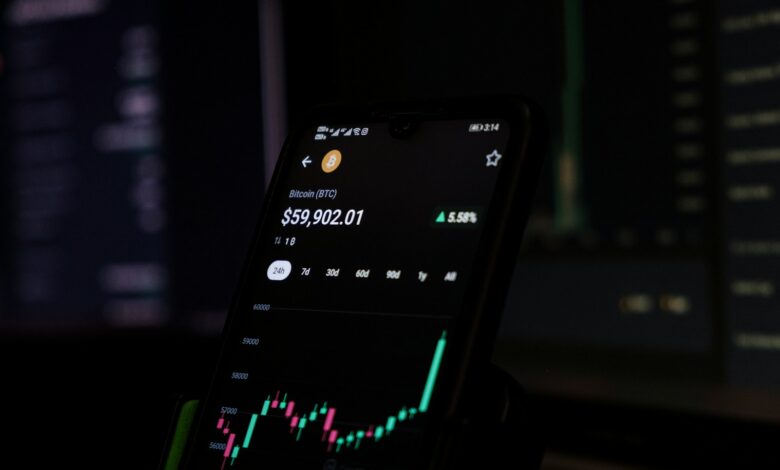Cryptocurrency market microstructure – trading mechanics

Understanding the order book dynamics is critical for optimizing entry and exit points within cryptocurrency exchanges. The continuous matching of buy and sell orders drives price formation, with liquidity concentration directly influencing spreads and execution costs. Active monitoring of order flow provides insight into short-term supply-demand imbalances that shape intraday price fluctuations.
Price discovery in digital asset venues relies heavily on the interaction between limit and market orders across multiple trading pairs. Depth levels in the book reveal hidden layers of support and resistance, while rapid changes in order size can signal impending volatility shifts. Analyzing these mechanics enables traders to anticipate directional moves and adjust strategies accordingly.
Execution efficiency depends on understanding how different types of orders impact market depth and timing. Market takers face slippage risks when consuming liquidity at unfavorable prices, whereas liquidity providers benefit from capturing spreads but expose themselves to adverse selection. Advanced order routing algorithms now incorporate real-time book data to minimize transaction costs and improve fill quality.
Cryptocurrency Market Microstructure: Trading Mechanics [Digital Finance digital-finance]
The process of price discovery within decentralized asset exchanges hinges on the interaction between participants submitting orders and the structure of the order book. Liquidity providers place limit orders at various price levels, while liquidity takers execute market orders that consume available offers. This dynamic orchestrates continuous adjustment in bid-ask spreads and shapes short-term price fluctuations. Analysis of order flow data reveals that tighter spreads correlate with increased transaction volume, promoting efficient execution and lowering implicit trading costs.
Order books serve as transparent ledgers displaying current buy and sell interest aggregated by price tiers. Their depth influences market resiliency against large transactions, with thicker books absorbing shocks more effectively. For example, during high-volatility episodes such as network congestion events or regulatory announcements, the thinning of order books can lead to pronounced slippage and rapid price swings. Quantitative models incorporating order imbalance metrics provide predictive insights into imminent directional moves.
Detailed Examination of Execution Protocols
Automated matching engines underpin exchange operations by pairing incoming orders according to predefined priority rules–commonly price-time priority–ensuring fairness and predictability in fills. Variations in protocol design, such as pro-rata allocation or hybrid models, impact the distribution of executed volumes among resting orders. Case studies from leading platforms demonstrate that nuanced differences in matching algorithms influence participant behavior, often incentivizing strategic order placement to capture queue position advantages.
Latency plays a critical role in shaping participant experience and market quality across venues. High-frequency actors exploit minimal delays to capitalize on fleeting arbitrage opportunities between connected ecosystems or cross-listed tokens. Empirical measurements indicate that sub-millisecond response times correspond with reduced adverse selection costs for liquidity providers and contribute to narrower effective spreads. Conversely, increased latency exacerbates information asymmetry and may elevate volatility through delayed reaction to new information.
Regulatory frameworks also interact with microstructural elements by imposing constraints on permissible order types, cancellation policies, or disclosure requirements. These parameters affect overall transparency and influence how quickly prices assimilate external shocks. For instance, introduction of maker-taker fee schedules has demonstrably altered participant incentives, encouraging greater provision of passive liquidity but occasionally resulting in quote stuffing tactics that challenge genuine discovery processes.
Emerging innovations such as decentralized automated market makers (AMMs) introduce alternative paradigms for price formation distinct from traditional limit order books. By algorithmically adjusting prices based on token reserves without relying on explicit bids or asks, AMMs provide continuous liquidity but can suffer from impermanent loss risks impacting provider returns. Comparative analyses highlight trade-offs between centralized matching systems’ granularity and decentralized protocols’ accessibility when evaluating efficiency and stability under varying market stress conditions.
Order Types and Execution
To optimize entry and exit strategies, understanding various order types is indispensable. Limit orders allow specifying a precise price at which a position will be executed, offering control over transaction costs by setting boundaries within the order book. In contrast, market orders prioritize immediacy, executing at the best available price in the liquidity pool, often crossing the spread and potentially incurring slippage during periods of low depth.
Stop orders provide mechanisms to automate position management based on price triggers, converting into market or limit orders once predetermined thresholds are met. This dynamic enhances risk mitigation by enabling disciplined exits or entries when certain price levels are breached. Examining recent data from top-tier exchanges reveals that stop-limit combinations are increasingly employed to fine-tune execution precision amid high volatility.
Order Book Dynamics and Price Formation
The order book structure critically influences execution outcomes. Depth and distribution of resting bids and asks shape available liquidity at discrete prices, directly impacting fill probability for limit orders. For example, thin books with sparse offers elevate the likelihood of partial fills or slippage for sizeable orders, whereas thick books promote tighter spreads and stable pricing trajectories.
Analyzing time-weighted average price (TWAP) algorithms highlights their reliance on dissecting large volumes into smaller slices aligned with real-time book conditions to minimize market impact. Empirical case studies demonstrate that adaptive slicing based on book imbalance optimizes execution cost by exploiting transient liquidity pockets without signaling intent excessively.
Advanced order types such as hidden or iceberg orders play pivotal roles in concealing true size from public visibility while maintaining presence in the queue. These tactics reduce information leakage but may suffer from delayed fills if counterparties fail to interact with concealed quantities promptly. Market data indicates that iceberg usage peaks during announcements and macroeconomic events when discretion becomes paramount.
A comprehensive grasp of these mechanisms enables practitioners to tailor execution protocols aligned with strategic objectives and prevailing liquidity conditions. Additionally, integrating real-time analytics on order flow can preempt adverse selection risks inherent in aggressive executions.
The interplay between order routing strategies and exchange-specific microstructures further complicates execution quality assessment. Fragmentation across venues demands smart order routing engines capable of dynamically optimizing fills by aggregating dispersed liquidity pools while minimizing latency-induced slippage. Continuous monitoring of cross-exchange arbitrage opportunities provides supplementary alpha generation avenues for sophisticated operators.
Liquidity Provision Strategies
Optimal liquidity provision requires continuous adjustment of orders within the order book to balance risk and profitability. Market participants employing passive strategies place limit orders near prevailing price levels to capture the bid-ask spread while minimizing adverse selection. For instance, adaptive quoting algorithms dynamically modify order placement based on real-time depth and volatility metrics, ensuring adequate exposure without excessive inventory accumulation.
Active liquidity providers engage in price discovery by continuously monitoring incoming market information and adjusting quotes accordingly. This involves rapid cancellation and submission of orders to reflect shifting supply-demand imbalances. Empirical data from decentralized exchanges reveals that such tactics improve execution quality, reduce slippage, and contribute to tighter spreads, thereby enhancing overall transactional efficiency.
The structure of the order book plays a pivotal role in determining suitable strategies. Deep books with substantial resting volumes enable layering approaches where multiple limit orders at staggered prices create a synthetic liquidity gradient. Conversely, thinner books necessitate cautious order sizing and placement to prevent significant price impact. Case studies from electronic trading venues indicate that combining iceberg orders with time-weighted average price (TWAP) executions mitigates information leakage while sustaining market presence.
Regulatory shifts affecting transparency and transaction reporting influence liquidity provisioning as well. Increased visibility into hidden orders or dark pool activities alters competitive dynamics among participants, prompting refinements in algorithmic frameworks. Forecast models suggest that integrating latency arbitrage defenses alongside predictive analytics will become standard practice for maintaining advantageous positioning amid evolving infrastructural conditions.
Price Formation Processes
The establishment of asset value within decentralized exchanges depends heavily on the continuous interaction between supply and demand reflected in the order book. Bid and ask orders populate this ledger with varying sizes and prices, creating a dynamic environment where price discovery unfolds through execution priority and liquidity depth. The interplay of limit orders and market orders dictates immediate transaction execution against standing offers, effectively shaping short-term valuation shifts. This mechanism enables real-time adjustment of quoted prices to reflect incoming information and participant sentiment.
Order book transparency plays a pivotal role in revealing latent liquidity pools that influence quote stability and volatility patterns. Depth beyond best bid-ask spreads provides insight into potential resistance levels or support zones, guiding algorithmic strategies that exploit microprice changes. Empirical studies show that thicker books correlate with reduced price impact from large trades, enhancing overall market efficiency by mitigating abrupt fluctuations during volume surges.
Mechanisms Underlying Price Discovery
Price formation hinges on the matching engine’s capacity to align counterparties efficiently while minimizing slippage. In high-frequency environments, latency differentials can induce transient arbitrage opportunities, affecting mid-price accuracy momentarily. Analysis of trade data reveals that clustered aggressive orders often signal directional momentum shifts, prompting adaptive adjustments in quoted prices across interconnected platforms. Consequently, cross-exchange arbitrage serves as an external validator for prevailing price levels.
Execution algorithms employ various approaches–such as VWAP (Volume Weighted Average Price) or TWAP (Time Weighted Average Price)–to optimize entry points within fragmented liquidity landscapes. These techniques reduce market impact by distributing order flow strategically over time or volume metrics, thereby smoothing price trajectories during substantial acquisitions or liquidations. Risk management protocols integrate these models to preserve portfolio value against adverse price movements induced by excessive immediacy.
Volatility bursts frequently emerge from imbalances between aggressive takers and passive providers within the order queue. Sudden influxes of market orders can consume multiple price levels in rapid succession, generating cascading effects observable in order book snapshots. Quantitative monitoring tools analyze such events to predict potential reversals or continuation signals based on historical response patterns to similar liquidity shocks.
Regulatory frameworks influencing exchange transparency requirements indirectly affect pricing dynamics by mandating standardized reporting and fair access conditions. Enhanced surveillance reduces information asymmetry among participants and curtails manipulative practices that could distort genuine valuation processes. As a result, informed decision-making is supported by reliable data streams reflecting actual supply-demand interactions rather than artificial quote inflation or deflation.
Impact of Market Fragmentation
Fragmentation across multiple venues significantly affects the price formation process by dispersing liquidity and complicating order execution strategies. When order books are split among various exchanges, the depth available at each platform diminishes, causing wider bid-ask spreads and increased slippage for sizable transactions. This dispersion challenges efficient price discovery as traders must aggregate information from diverse sources to assess true supply and demand dynamics.
Data from recent studies indicate that fragmented ecosystems often lead to latency arbitrage opportunities where high-frequency participants exploit differences in quote updates between venues. Such discrepancies distort the observed mid-price and may induce misleading signals about asset value, undermining confidence in the aggregated pricing mechanism. Moreover, fragmentation raises operational costs due to the need for sophisticated routing algorithms to locate optimal fills across disparate liquidity pools.
Liquidity Distribution and Order Execution Complexity
The segmentation of trading activity results in thinner liquidity per venue, which is particularly detrimental during periods of market stress or high volatility. For example, a large institutional participant placing an order across multiple order books risks partial fills at unfavorable prices or delayed execution times. These adverse effects stem from variations in matching engines’ rules and fee structures, which alter incentives for providing liquidity on different platforms.
Case studies reveal that venues with lower fees but fragmented order flow experience less consistent price improvement compared to centralized counterparts. This fragmentation forces participants to employ complex smart order routers that dynamically split orders based on real-time data feeds, increasing system complexity and technological barriers for smaller investors attempting efficient trade fulfillment.
The process of price discovery suffers under these conditions as fragmented quotes create inconsistencies in perceived asset valuation. Traders relying solely on single-venue data risk mispricing assets or missing arbitrage opportunities present in other pools. Multi-source aggregation tools attempt to reconcile discrepancies but cannot fully eliminate timing lags inherent in decentralized infrastructures.
Regulatory trends increasingly emphasize transparency and interoperability standards aimed at mitigating fragmentation drawbacks by promoting consolidated tape initiatives and cross-platform reporting requirements. As integration efforts evolve alongside technological advancements such as atomic swaps and decentralized liquidity protocols, it remains critical for market participants to continuously adapt their strategies considering multi-venue complexities impacting both price efficiency and operational execution quality.
Conclusion: The Integral Function of Algorithmic Systems in Price Formation
Algorithmic strategies decisively influence the order book dynamics and price discovery process within decentralized asset exchanges. By executing pre-programmed instructions at sub-second intervals, these systems optimize liquidity provision and arbitrage opportunities, thereby enhancing transaction efficiency and reducing bid-ask spreads across trading venues.
The interplay between algorithmic execution and order flow generates nuanced patterns in depth and resilience of the order book, directly shaping short-term valuation shifts. This interaction not only stabilizes volatility but also facilitates continuous price adjustment reflective of real-time information asymmetries embedded in network activity.
Strategic Implications and Prospective Developments
- Adaptive Order Placement: Advanced algorithms leveraging machine learning models can dynamically calibrate limit versus market orders to minimize slippage while maximizing fill rates in fragmented liquidity pools.
- Microsecond-Level Execution: Ultra-low latency systems will increasingly dominate trade sequencing, reinforcing frontrunning resistance mechanisms embedded within exchange protocols.
- Cross-Protocol Integration: Synchronizing automated agents across multiple ledgers promises enhanced arbitrage efficiency, driving tighter pricing convergence on a global scale.
- Regulatory Interface: Emerging compliance frameworks targeting algorithmic behavior demand transparent audit trails and risk controls aligned with systemic stability objectives.
The fusion of algorithmic decision-making with intricate transactional infrastructure heralds a transformative phase for decentralized trading ecosystems. Continuous innovation in execution logic will further refine the micro-level mechanics governing supply-demand equilibrium, ultimately contributing to more robust and efficient valuation mechanisms. Observing these evolving interactions provides critical foresight into future liquidity trends and structural shifts within this specialized financial domain.






